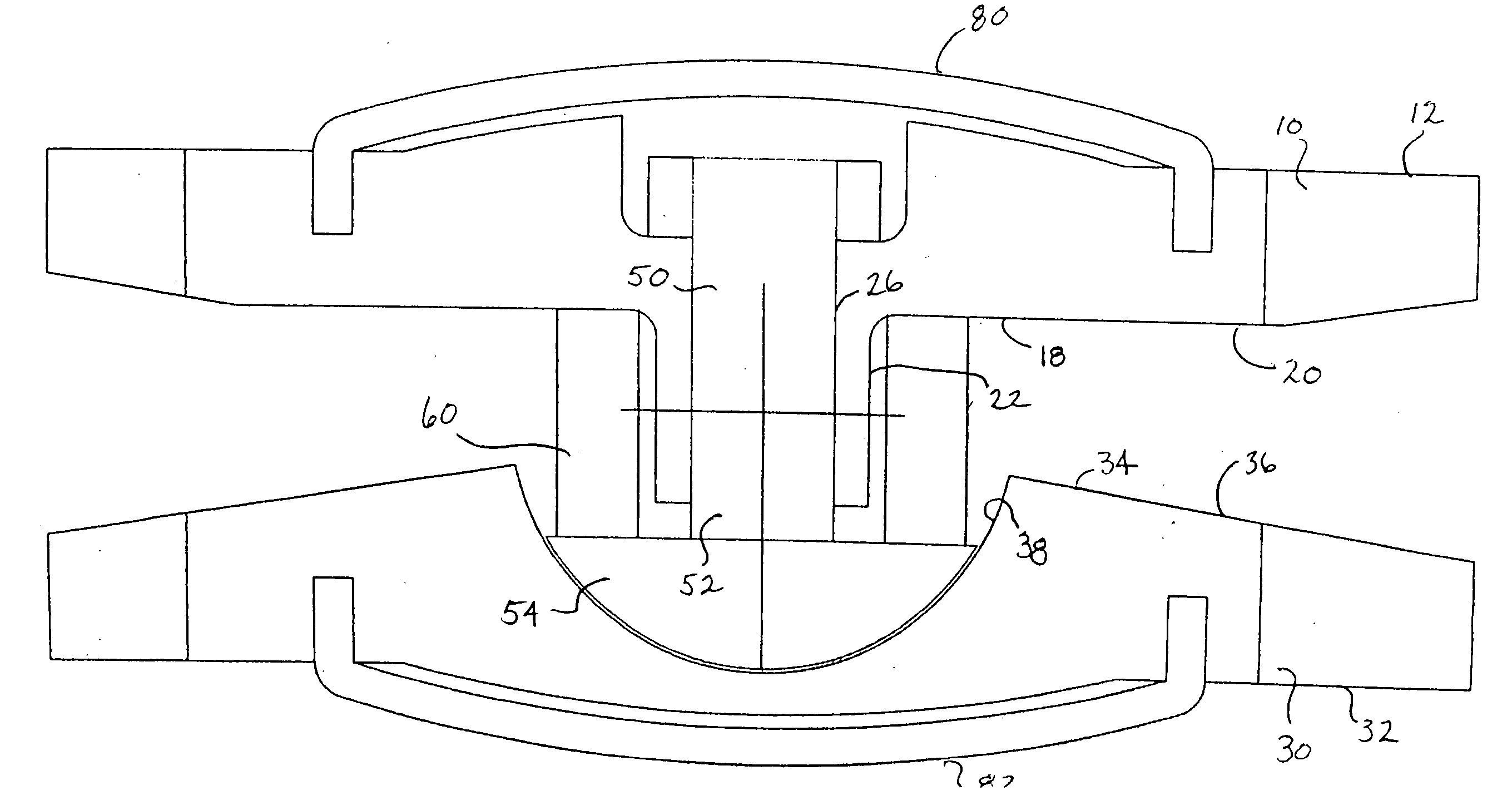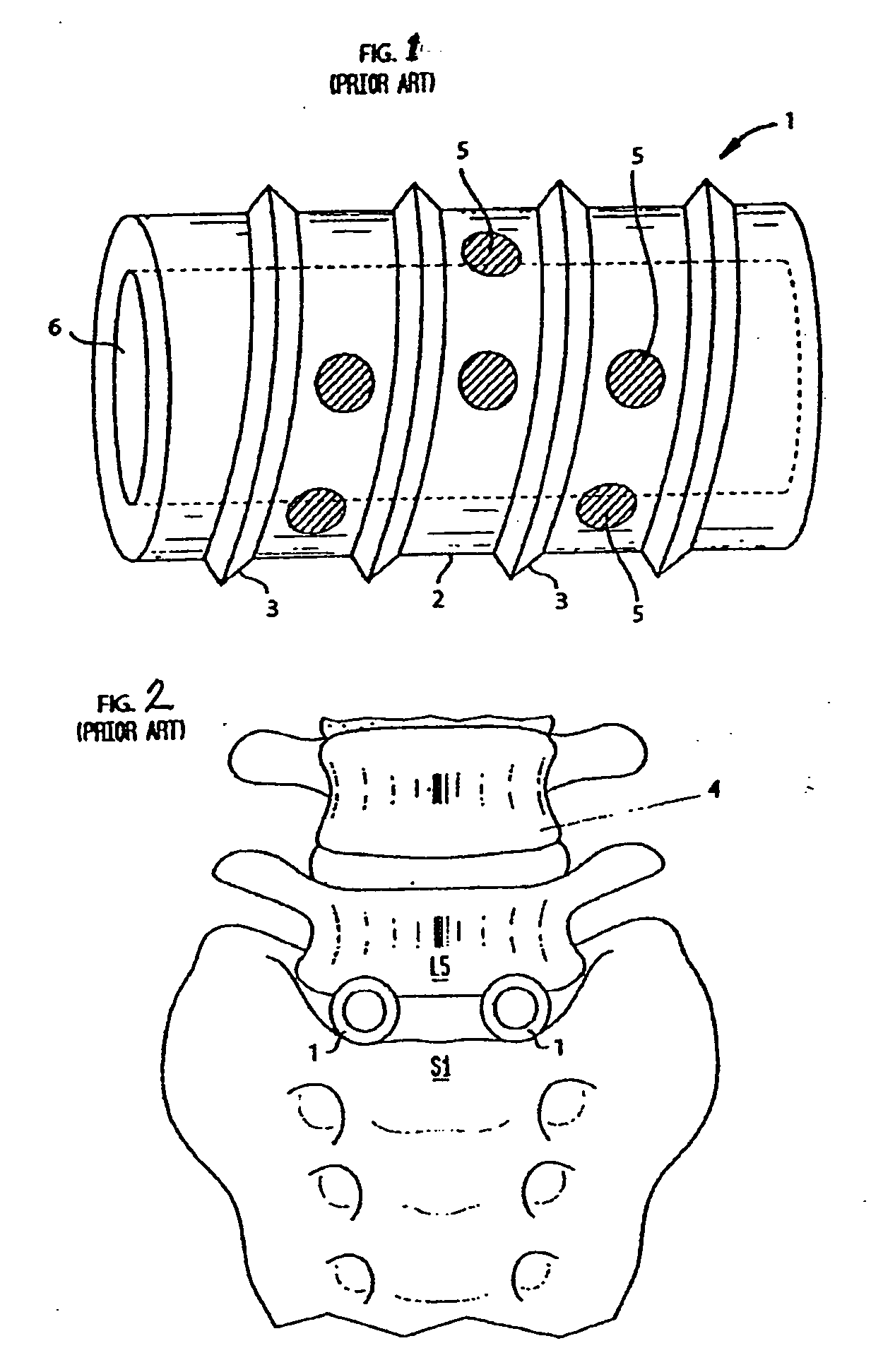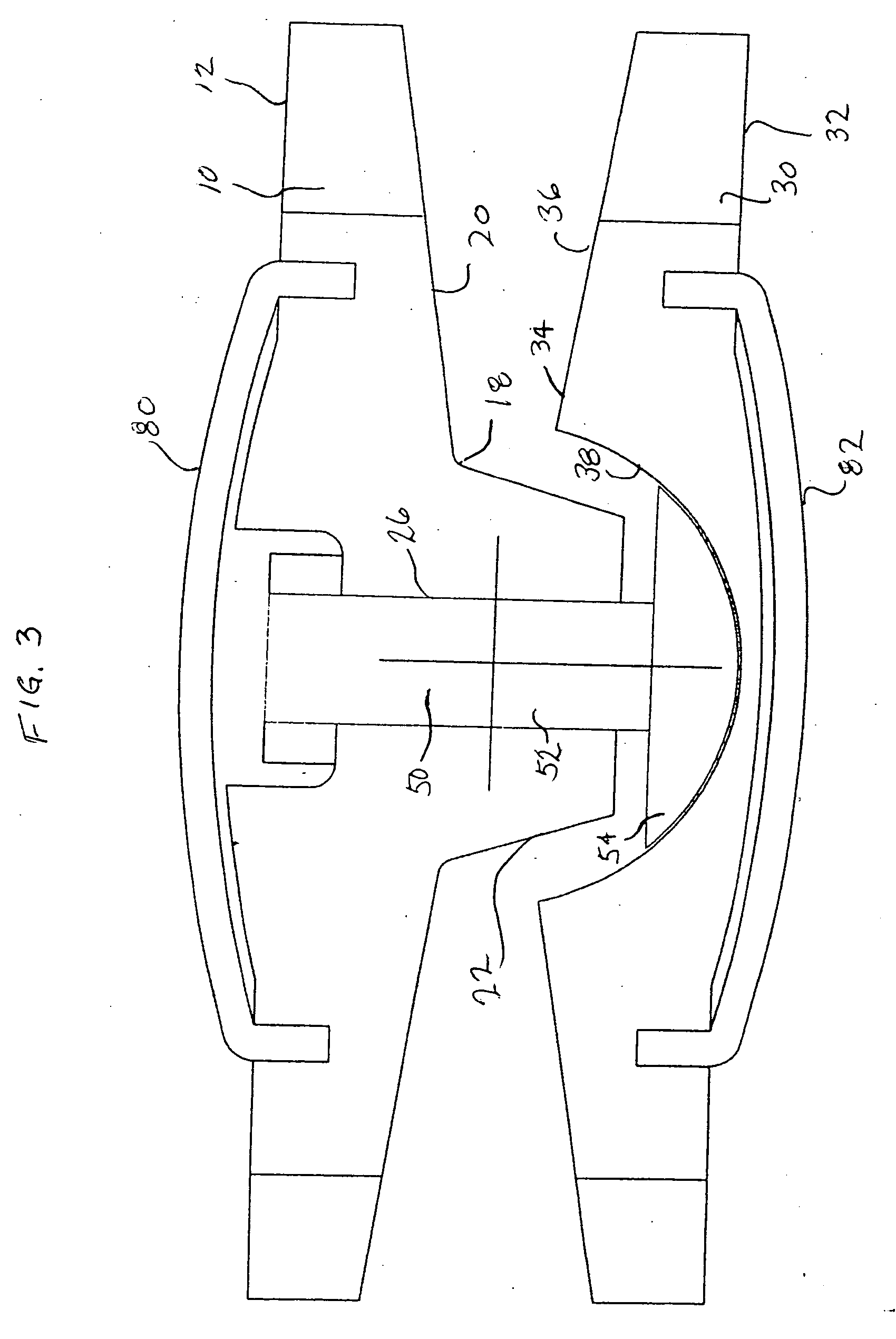Artificial intervertebral disc having an articulating joint
a technology of artificial intervertebral discs and articulating joints, which is applied in the field of spinal implant assembly, can solve the problems of collateral injury to the patient's spine, limiting the overall flexibility of the spinal column, and limiting the normal motion of the patien
- Summary
- Abstract
- Description
- Claims
- Application Information
AI Technical Summary
Benefits of technology
Problems solved by technology
Method used
Image
Examples
Embodiment Construction
[0048] While the invention will be described more fully hereinafter with reference to the accompanying drawings, in which particular embodiments and methods of implantation are shown, it is to be understood at the outset that persons skilled in the art may modify the invention herein described while achieving the functions and results of the invention. Accordingly, the descriptions that follow are to be understood as illustrative and exemplary of specific structures, aspects and features within the broad scope of the invention and not as limiting of such broad scope. Like numbers refer to similar features of like elements throughout.
[0049] A preferred embodiment of the present invention will now be described.
[0050] Referring to FIG. 3, the invention is shown having a first baseplate 10 and a second baseplate 30 and a pin 50. Each baseplate 10,30 has an outwardly facing surface 12,32. Because the artificial disc of the invention is to be positioned between the facing surfaces of ad...
PUM
 Login to View More
Login to View More Abstract
Description
Claims
Application Information
 Login to View More
Login to View More - R&D
- Intellectual Property
- Life Sciences
- Materials
- Tech Scout
- Unparalleled Data Quality
- Higher Quality Content
- 60% Fewer Hallucinations
Browse by: Latest US Patents, China's latest patents, Technical Efficacy Thesaurus, Application Domain, Technology Topic, Popular Technical Reports.
© 2025 PatSnap. All rights reserved.Legal|Privacy policy|Modern Slavery Act Transparency Statement|Sitemap|About US| Contact US: help@patsnap.com



